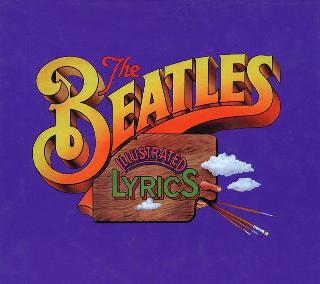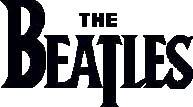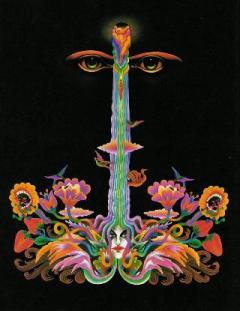Index
Home
Vorige
A Hard Day's Night
Composer(s) : Lennon and McCartney
Year : 1963
Chords/Tabs: A Hard Day's Night
Notes on "A Hard Day's Night" (AHDN)
KEY G Major
METER 4/4
FORM Intro -> Verse -> Verse -> Bridge -> Verse -> Verse (solo) ->
Bridge -> Verse -> Outro (fadeout)
GENERAL POINTS OF INTEREST
Style and Form
- Though much less directly blues-derived than either
"Can't Buy Me Love" (CBML) or
"You Can't Do That" (YCDT), "A Hard Day's Night"
(AHDN) bears close comparison to both of those songs. At the very
least, all three of them share the same long form, with two bridges
and an instrumental break. Of course, the more interesting connection
is the manner in which AHDN takes one step further the concept, seen
in the other two songs, of a style borne of the fusion between
traditional blues elements and those more recognizable as the Beatles
own trademarks.
- There's a bonafide trend to be charted here:
CBML had a verse section that was close to pure
blues in form, chord progression and melody.
YCDT retained the blues form and the chord
progression, but its melody already had wavered between the minor and
Major 3rd. In AHDN, only the 12-bar length and AAB phrasing of the
blues remains along with some of the minor 3rd melodic flavor, but the
rest had long since gone the way of Lennon and McCartney.
- AHDN is a particularly forward-looking song as well. Aside from
several innovations in the area of harmony and arrangement, its
rhythmic resources make an especially strong contribution. As we'll
see during our walkthrough, behind the generally energetic and
syncopated bustle that appears on the surface, there is also a great
deal of forward thrust generated here by the way the music, on an
almost subliminal level, toys around with surprising stop-and-go
contrasts of pace and activity.
Melody and Harmony
- The verse features notable emphasis on the bluesy melodic flat 7th,
but with the exception of the closing phrase ("feel alright"), the
melodic third is clearly Major, rather than minor. By contrast, the
bridge is entirely in the Major mode. All this, by the way, is very
similar to what we saw in the melody of YCDT.
- Overall, the words are patter-scanned with one note per syllable.
However, in contrast, there are many long-sustained notes which jut
out of the tune on a paradoxically frequent but irregular basis. The
verse, in particular, contains an unusually large number of different
rhythmic values, all the way from half to sixteenth notes, and a
steady stream of syncopations; I'd spell it out further but without
music paper it's just too tedious.
- The song is firmly in the key of G Major, though the bridge presents a
short-lived and weakly established excursion to the unusual key of iii
(b minor).
- With the obvious exception of the opening/closing sonority, the choice
of chords is familiar. Although the Beatles had already used the
flat-VII chord on few songs that pre-date this one (e.g.
PSILY, DBM, and
AML), its appearance here is still a notably early
example of its employment.
- A couple of dissonant clashes between the tune and the chords are
continually reiterated. In the verse, the melodic note 'D' appears first
as a 9th against the C Major chord (as on the word 'days' of the opening
line) and later as an added-sixth against the F Major chord (as on the
syllable "wor" in "working", and on the word "like"). Similarly in the
bridge, the melodic note 'A' clashes as an added-sixth against the C Major
chord on the word "tight" (you should pardon the expression.) These all
pass you by quickly, but on a subtle level the very casualness with which
such dissonance is used adds a characterizingly "slang" flavor to the
song's overall musical vocabulary.
Arrangement
- Alas, even the mono CD mix of this song has a fake-stereo-like high
level of fuzziness to it, though it does have the curious property
that if you turn it up loud enough, it begins to feel like a wall of
sound. For those who have ever bemoaned this fact, the roughly
executed but clearly recorded early outtakes are a revelation.
- The wall of sound effect is partly the result of the drumming style
being kept unvaried throughout. With the minor exception of some added
four-in-the-bar beating on a cowbell during the bridges, we have wall
to wall thumping on drums and cymbals in place of the sort of drum fills
and texture changes we're more used to hearing Ringo employ to
differentiate formal sections. Instead of creating a "problem", this
monolithic approach to percussion here actually adds to the steam-rolling
thrust of the song.
- Joking aside, this is very much the song in which the
characteristic sound of George's 12-string guitar would establish
itself. Its appearance in the opening and closing chords, as well as
the manner in which it is doubled with electric piano in the solo
section are among the more instantaneously recognizable sound bites in
all of popular music.
- John and Paul's vocals employ the familiar double-tracking
throughout, but their arrangement itself features a novel gambit.
John takes most of the verse as a solo, and ditto for Paul with the
bridge. The first half of the verse's closing phrase, though, is done
up as a duet in parallel thirds on an unusual downward chromatic run;
a gesture that mediates nicely between the alternating solo passages.
SECTION-BY-SECTION WALKTHROUGH
Intro
- That chord, (bang!), eh? Its great effect is not only related to
the pitch content, but to the sudden, crisp attack as well. Wake me
up from the dead of sleep many years hence and play it for me by
itself out of context, and not only do I trust I'll be able to
identify it immediately, but also summon with close to total recall
just how it shot through my consciousness the very first time I heard
it as a mere not-so-pimply adolescent.
- I've seen better people than myself argue (and in public, no less)
about the exact guitar voicing of this chord and I'll stay out of that
question for now (what a cop-out, Alan!), and merely state that its
sonority is akin to a superimposition of the chords of d minor, F
Major, and G Major; i.e. it contains the notes D, F, A, C, and G -- to
my ears, only the B is missing. Even if you don't know a thing about
harmony or musical dictation, you can at least hear the G as a
suspended 4th over the D on the bottom. Hullaballoo aside, this chord
functions as a surrogate 'Dominant' (i.e. V) with respect to the chord
on G which begins the first verse.
- As a formal section, this intro is precisely two measures long and
is played "in tempo"; check out take #7 before which John explains to
the others how he'll "tap toe" through the long pause that follows
the opening chord so the others know when to come in. This pause, by
the way, is the first example here of how suspense and a sense of rising
expectation is created by a change of pace. A large part of this specific
effect is the surprise factor, especially as you experience it at the
beginning of the film or the album. When the song is literally announced
as in a concert ("and now we're gonna play AHDN ...") the effect simply
doesn't work as well.
Verse
- Although the 12-bar blues chord progression is not used here, this
verse in section is still twelve measures long and built out of three
phrases equal in length that form an AAB poetic pattern (actually,
quite similar to IWTHYH):
mm. 1 - 4, 5 - 8
------------------------------ 2X ------------------------------
|G C |G |F |G |
G: I IV I flat-VII I
mm. 9 - 12
|C |D |G C |G |
IV V I IV V
- The overall harmonic shape is closed and rather static. The appearance
of an "official" V -> I cadence is delayed until the third phrase, but
well before then, the G chord has been confirmed as the 'I' of the home
key several times over by the gentler, less formal means of the the IV
and flat-VII chords. The manner in which the first two phrases of the
tune seem so firmly centered on the note D provides an additional source
of stasis.
- A couple of factors work at pleasing cross-currents to the static
harmony and melody and help lend some shape and sense of direction to
the verse; e.g. the syncopated stress and sustained duration given to
the melodic F naturals in measures 3 and 7, and the holding out of the
melodic climax until measure 10 where it is embellished by the brief
duet of the two singers.
Bridge
- The bridge is eight measures long and built out of two phrases equal
in length and parallel in melodic shape:
|b |e |b |- ||G |e |C |D ||
G: iii vi iii I vi IV V
(b: i iv i ??)
- The first phrase presents a half-hearted modulation to the key of
b minor. The new key is never formally established by any kind of
dominant -> tonic (V - I) cadence but for an instant, one surely hears
the b -> e -> b chord progression as though it were i - iv - i in
the key of b. Of course, all this is all straightened out in the
second phrase where G is quickly re-established as the home key
via one of our favorite rock cliche chord progressions.
- Some free associations with YCDT are
unavoidable. Note the way in which the bridge opens with a
dramatically sustained melodic note (on the word "home" -- the longest
single duration in the whole song) that is followed by a resumption of
a chattier rhythm. The heavy emphasis on B and E chords in both
bridges is also striking though it should be pointed out that in the
each of the two songs, the chords are to be interpreted in the
opposite ways. In YCDT, the modulation was
to e and the B Major chord sounded like its V chord;
here, it is b minor that sounds like the key to which the
modulation has taken place, and the e chord sounds like its iv.
- As ever, we continue to find new examples in the active avoidance of
so-called foolish consistency in the creation of small variations: here,
the completion of Paul's solo and the return to John's vocal at the end
of the first bridge is neatly spliced end-to-end but with virtually no
overlap, whereas in the repeat of the bridge, John goes out of his way
to create a small spontaneous-sounding overlap by coming in a beat or
so early moaning the phoneme, "Oh ..."; I call it spontaneous sounding
because the effect appears as early as takes 3 and 7.
Solo
- The solo is melodically unconventional yet very bluesy at the same
time. The nervous and frequent changes of rhythmic values seen earlier
ripen into what borders on the spasmodic at this point. Indeed, am I
the only one who hears the execution of measures 3 and 7 of this solo
as sounding "impossibly" fast ?
- Formally, we have the sort of "semi-solo" we first saw back in
"From Me To You", where the instrumental is
abandoned in the final phrase of the section in favor of a
refrain-like reprise of the vocals heard in other iterations of the
verse.
Outro
- The outro starts of with their trademark powering-down
triple-repeat of the last half-phrase of the final verse, but it ends
off enigmatically on virtually the same chord with which the song
began. This parallelism by itself provides some unity to the song
overall, but still, the use of a non-I chord ending is unusual, and at
the time, was virtually unprecedented in a rock song; indeed, non-I
openings, while by no means nearly as rare, were themselves
still unusual.
- Although the chordal outlines played gently into the fadeout by
the lead guitar have none of the commanding impact of the opening
chord, the effect at the end is, in its own way, just as suspenseful
as the opening. In the film it effectively bridges the gap between
opening credits and first scene.
SOME FINAL THOUGHTS
- The lyrics are far from epochal or even merely profound. As touched
as you might allow yourself to be by the hero's profession of loving
gratitude and affectation of the working class hero, you just as easily
might be made a little uneasy by his faint air of condescending chauvanism.
- Beyond a point it doesn't really matter, though. Based on "only"
music and exuberant mood alone "if necessary", the song AHDN arguably
holds a place within the uppermost echelon of the Beatles catalog.
And in contrast to the historical subtleties of the
"Long Tall Sally" EP, it is very much along what
I've described as the indigenous stylistic path of the group.
- Even if you had somehow missed them on Ed Sullivan, or if perhaps
you had seen them on Ed's show yet their impact somehow missed you
(you dour old curmudgeon), it would have become increasingly, if not
impossibly, difficult to ignore the Beatles once the likes of this
song and its associated film came on the scene.
- Even my neighbor Fred (yes, that Fred) confided to me once
in a moment of exquisite vulnerability that although his parents had
taken him abroad on holiday during the summer of '64, a vacation
during which he was protectively sheltered from the deleterious
influence of Top-40 AM radio, that when he returned to our shores in
the early fall, upon hearing our title song, even he now knew
the Beatles were onto Something New.
Regards,
Alan (awp@bitstream.com OR uunet!huxley!awp)
---
"They take a turn down a back alley way and the crowd of screaming girls are
after them." 021792#49
---
Copyright (c) 1992 by Alan W. Pollack
All Rights Reserved
This article may be reproduced, retransmitted, redistributed and
otherwise propagated at will, provided that this notice remains
intact and in place.
Ook op A Hard Day's Night:
Ook op 1962-1966:
Ook op Live At The BBC:
Ook op 1:
(c) 2024 Serge Girard


 (c) Alan Aldrigde, The Beatles Illustrated Lyrics
(c) Alan Aldrigde, The Beatles Illustrated Lyrics